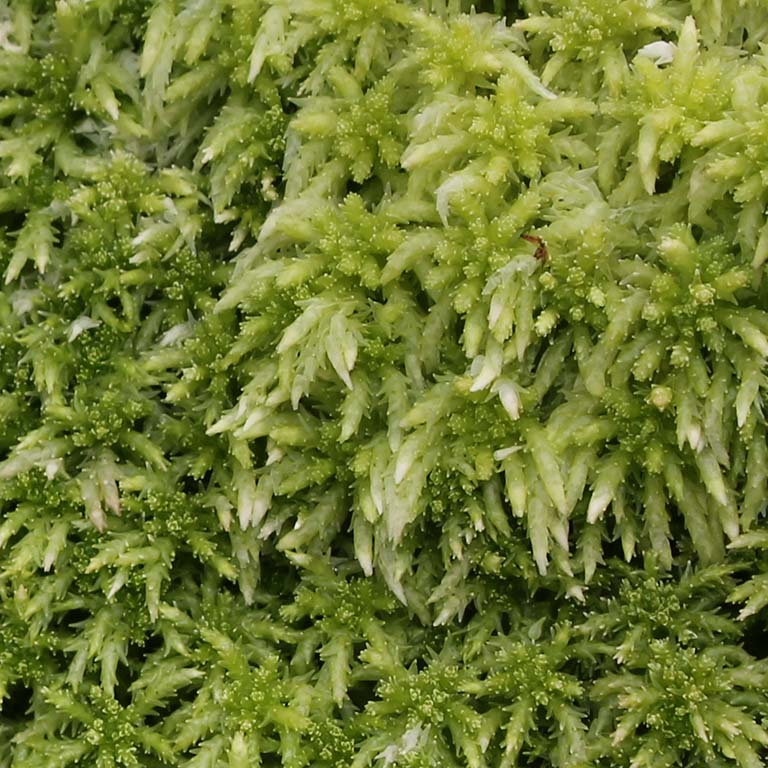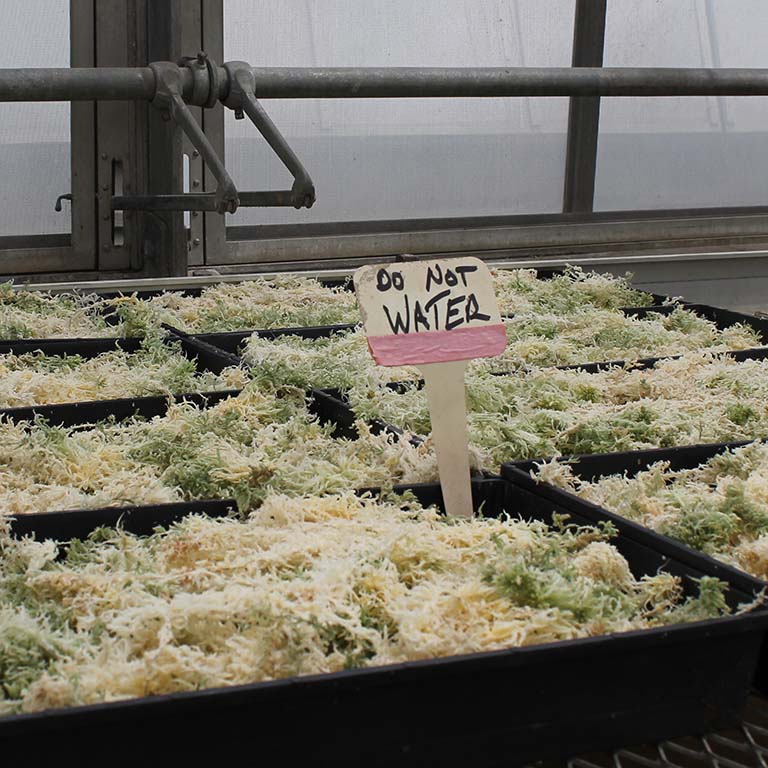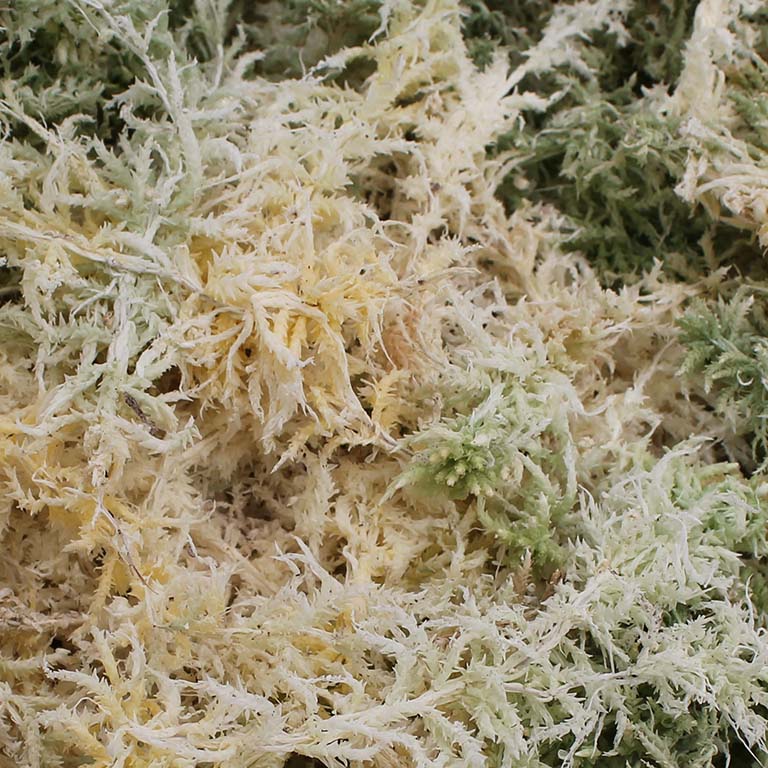Sphagnum moss is distinguished from other moss species by its unique branch clusters. Botanists use plant and stem color, shape of the branch and stem leaves, and shape of the green cells to identify sphagnum moss to the species level. Microscopic dissection is needed to identify most of the species. Botanists disagree on the total number of species in the genus Sphagnum, but many believe there are more than 300 species.
Sphagnum species are bryophytes (an informal group name for mosses, liverworts, and hornworts). Bryophytes have no roots or vascular tissue so must absorb water and nutrients from the air through their surfaces (such as their leaves). They require a moist habitat to thrive. Sphagnum mosses form dense clumps around ponds, in swamps and bogs, on moist acidic cliffs, and on lakeshores from tropical to subpolar regions.
Sphagnum moss gets its shaggy, unkempt appearance due to its profuse branching in a spiral around the upright stems. The branches often spread away from the main stem and curve back on themselves.
Sphagnum species reproduce through spores. The spore capsules are spherical, dark brown or black, and have short stalks. They violently expel their spores as far as 4 inches. Sphagnum species also commonly reproduce asexually when portions of the plants are broken off and become separate plants.
As the sphagnum moss continues to grow, its lower part dies off, turning from green to tan to dark brown. Accumulations of the dead material are called peat. Because sphagnum moss acidifies its environment, very few of the microbes normally responsible for decomposition exist. As a result, the layer of peat continues to grow at a rate of approximately 1 millimeter per year instead of decomposing. Peat bogs have formed in cooler regions where peat deposits have built up over thousands of years.




